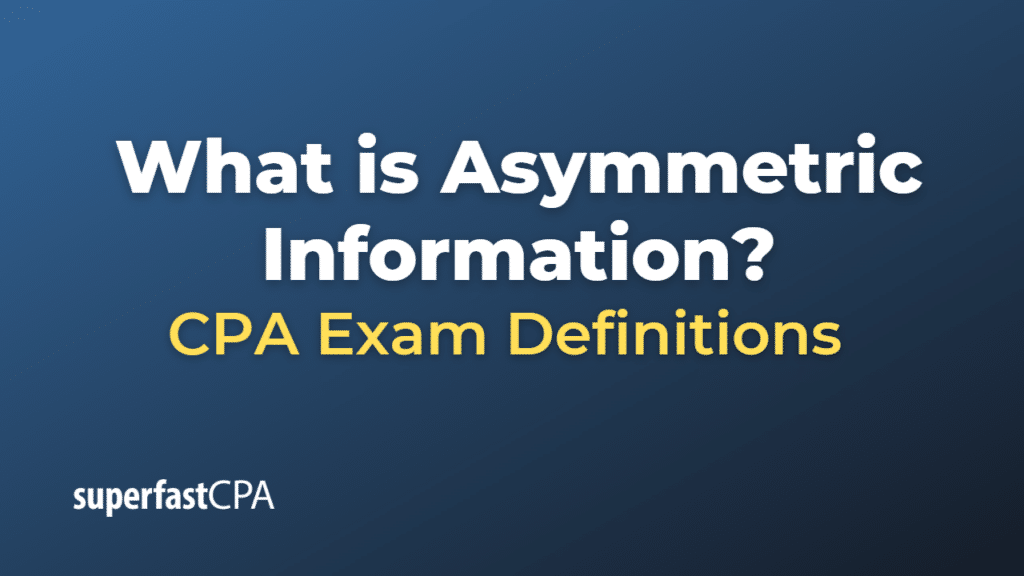Asymmetric Information
Asymmetric information refers to a situation where one party involved in a transaction or negotiation has more or better information than the other party. This information imbalance can lead to a variety of problems, including market inefficiencies, suboptimal decision-making, and potential exploitation of the less-informed party.
In the context of finance and economics, asymmetric information is commonly observed in various situations, such as:
- Principal-agent relationships: When a principal (e.g., a shareholder) hires an agent (e.g., a company manager) to act on their behalf, the agent may have more information about the company’s performance and prospects than the principal, leading to potential conflicts of interest or moral hazard issues.
- Credit markets: Lenders, such as banks, may have less information about the creditworthiness of borrowers than the borrowers themselves. This can lead to adverse selection (i.e., riskier borrowers being more likely to seek loans) and moral hazard (i.e., borrowers taking on excessive risk after obtaining a loan).
- Insurance markets: Insured individuals may have more information about their own risk factors (e.g., health, driving habits) than insurance companies. This can result in adverse selection (i.e., higher-risk individuals being more likely to seek insurance) and moral hazard (i.e., insured individuals taking on more risk because they are protected by insurance).
- Securities markets: Some market participants, such as company insiders or institutional investors, may have access to non-public information that gives them an advantage over other investors. This can create an unfair playing field and reduce overall market efficiency.
Asymmetric information can be mitigated through various mechanisms, such as regulation, information disclosure requirements, and the development of reputation systems to incentivize honesty and transparency.
Example of Asymmetric Information
Let’s consider an example from the used car market, which is a classic illustration of asymmetric information:
Suppose you want to buy a used car, and you find a seller who is offering a car at a seemingly reasonable price. However, the seller has much more information about the car than you do. They know its maintenance history, whether it has been involved in any accidents, and any hidden problems that may not be apparent during a test drive.
As the buyer, you face a significant information asymmetry, which makes it challenging to accurately assess the true value and condition of the car. The seller may exploit this information gap to sell the car at a higher price than it’s actually worth or withhold information about potential issues that could lead to costly repairs in the future.
To mitigate the asymmetric information problem, you could take several steps:
- Request maintenance records and a vehicle history report from the seller.
- Hire a mechanic to inspect the car before making a purchase decision.
- Research the average price and common issues for the specific make and model you’re interested in.
These actions help reduce the information gap and allow you to make a more informed decision about whether to buy the car and at what price.













